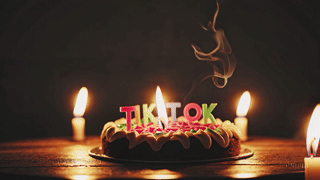TikTok's Last Dance

Last night, huddled around a birthday cake, I watched a digital earthquake reshape our world in real-time. The moment TikTok went dark, the room filled with a peculiar energy - part grief, part relief, all transition. There's something profoundly human about witnessing the end of an era while celebrating another year of life in the physical world.
The reactions around me told a story of our complicated relationship with these digital spaces. Friends joked about finally getting sleep instead of scrolling until 4 AM, while others whispered rumors about Trump swooping in for a last-minute save. But beneath the nervous laughter lay deeper layers of uncertainty, especially for those whose lives had been transformed by the platform’s algorithmic alchemy.
I caught a few minutes of a friend’s final TikTok live just before the party, watching her map out her migration to YouTube with the kind of resilience that defines this creator generation. It’s cultural evolution in real-time, each creator making split-second decisions about adaptation or hibernation in this strange liminal space. We’re conducting micro-experiments in human connection, searching for that sweet spot where production value meets genuine human experience.
As someone who crafts polished content for brands, I acutely feel the tension between platforms. This dance between polish and authenticity, between aspiration and reliability, highlights something profound about the different “temperatures” of social media platforms. TikTok has this raw, unfiltered energy— where the imperfections are part of the appeal. Instagram and Reels offer a more curated, timeless canvas. An illusion, perhaps, but one that aligns with the aspirational yet authentic stories brands want to tell. It’s a different language from TikTok’s raw vibe, requiring us to be cultural translators as much as creators.
There’s a beautiful truth in how content lives in our digital age. Sometimes it slips right through our consciousness, other times it forms memories that stick, offering value when we need it most. The platform may change, but the human desire to connect, create, and share persists.
What fascinates me most is how these transitions reveal our deep emotional ties to digital spaces. The collapse of a platform threatens more than archived content—it risks unraveling communities, dismantling careers, and silencing voices that finally found their harmony. TikTok struck a frequency of human expression that neither Instagram nor YouTube can truly replicate.
Digital ecosystems crumble and rebuild in real time, each notification bringing news of another creator's exodus to a new app or bold last stand. I watch friends become pioneers overnight, hauling their hard-won audiences across platform borders like nomads seeking fertile ground. Others stand perfectly still, reading omens in engagement metrics and presidential tweets, treating every whisper of a last-minute save like rain clouds in a drought.
The strangest part is that in our obsessively documented digital age, no one's quite figured out how to navigate platform extinction with grace. Yet somehow, this generation of creators has turned digital displacement into performance art. Each platform death becomes a stage for reinvention, each migration a chance to reimagine what's possible in these virtual spaces we call home.
Maybe that’s the lesson: platforms come and go, but storytelling persists. The stories we tell endure, finding new homes in the digital gardens we’ll plant next.

